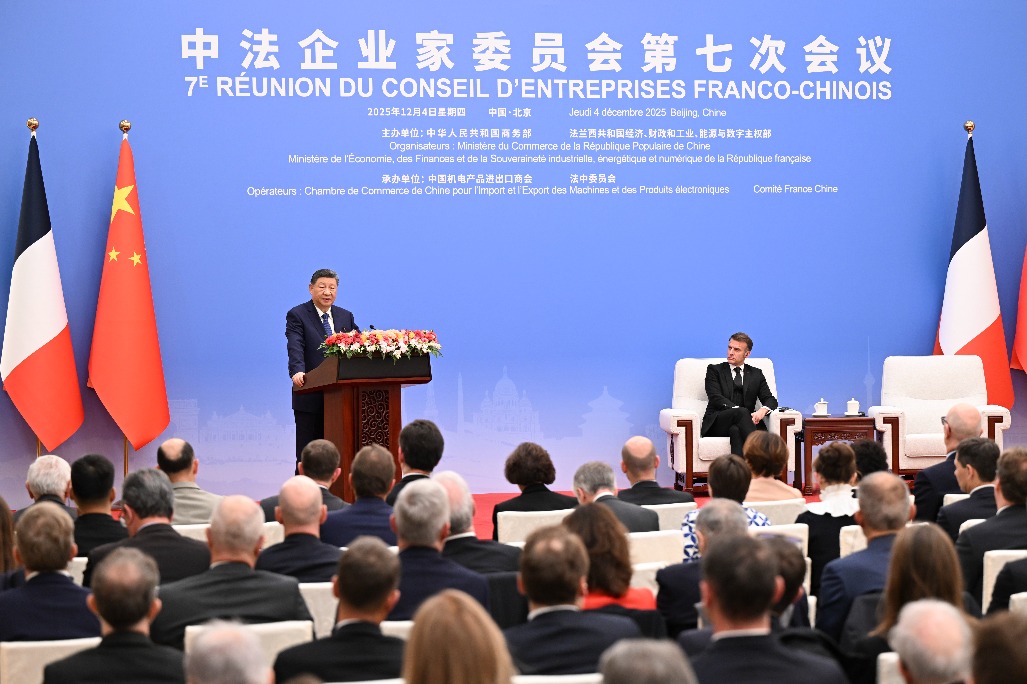What's news

GOVT AND POLICIES
Postal industry fares well in first 11 months
China's postal industry saw a 21.6-percent rise in business revenue year-on-year to reach 868.15 billion yuan ($123.7 billion) in the first 11 months, data from the State Post Bureau showed. The express delivery sector, the backbone of the postal service, has seen fast expansion, as courier firms made 56.79 billion deliveries during the period, up 25.4 percent year-on-year. The business revenue of these courier firms jumped 23.9 percent year-on-year to stand at 672.57 billion yuan over the same period. China plans to extend its courier network and improve computer systems, services and international connections by 2020 when the target annual revenue of the courier sector will hit 800 billion yuan.
Express delivery firms handle 60b parcels
China's courier industry has delivered a total of 60 billion parcels in 2019 as of Monday morning, according to real-time monitoring data from the State Post Bureau (SPB). The figures indicate that the number of per capita express packages exceeded 42 this year. China's express delivery market has posted continuous expansion in recent years, with 20,000 express delivery enterprises and more than 3 million employees, said Feng Lihu, spokesperson with the SPB. Over 30,000 express delivery outlets have been set up in townships across the country so far, covering 96 percent of all such localities, the SPB's data showed.
Cultural industry sees robust growth in 2018
China's cultural industry posted robust revenue and profit growth in 2018, the results of the fourth national economic census showed. By the end of 2018, the combined revenue of the cultural sector stood at 13 trillion yuan ($1.85 trillion), up 55.5 percent from 2013, according to the National Bureau of Statistics. Profits of major cultural enterprises reached 797.14 billion yuan, rising 68.8 percent from the end of 2013. In breakdown, news and information services, content creation and cultural equipment manufacturing posted strong performances, with their return on assets standing at 13.3 percent, 8.3 percent and 7.5 percent, respectively.
High-tech services upgrade tertiary sector
China's tertiary sector upgraded from 2014 to 2018, thanks to the boost from the high-tech services industry, data from the country's fourth economic census showed. At the end of 2018, the number of companies providing high-tech services nearly tripled from 2013 to reach 2.16 million, employing 20.63 million people, according to a report on the website of the National Bureau of Statistics. The number of companies in the industry accounted for 14.9 percent of the entire tertiary sector, while the number of employees took up 13.7 percent of the total hired in the sector. Both the total assets and the operating revenue of those companies more than doubled from 2013 to hit 31.19 trillion yuan ($4.45 trillion) and 11.67 trillion yuan, respectively, at the end of 2018.
Tech JV to help provide financial solutions
Copenhagen Saxo Bank A/S and a subsidiary of Zhejiang Geely Holding Group Co Ltd, or Geely Sweden Holdings AB, jointly announced on Tuesday that they had agreed to establish a technological joint venture to provide financial and regulatory technology solutions to financial institutions for banks and fintechs (financial technology) in China. Saxo Bank and Geely will own an equal 50 percent split in the new joint venture, which will utilize cutting edge technologies to provide Chinese institutions with full-suite financial and regulatory technology solutions.
AROUND THE WORLD
S.Korea's corporate profitability worsens
South Korea's corporate profitability worsened in the third quarter amid lingering external uncertainties, central bank data showed on Tuesday. The average ratio of operating profit to revenue for local companies was 4.8 percent in the July-September quarter, down 2.8 percentage points from a year earlier, according to the Bank of Korea. The result was based on the survey of 1,603 listed and unlisted firms. The ratio more than halved among manufacturers owing to external uncertainties, such as the global trade dispute and the global chip industry's downturn. The figure for manufacturers declined to 4.5 percent in the September quarter from 9.7 percent tallied a year earlier.
Private manufacturing output drops in UK
The private sector output in the United Kingdom continued to decline in December, led by the fastest drop in manufacturing output since 2012, according to a survey published on Monday by IHS Markit, a London-based global information provider. The IHS Markit/CIPS Flash UK Composite Output Index in December was 48.5, down from 49.3 in November and below the "crucial" 50.0 no-change mark. Figures showed that services sector output dropped slightly in December, with service Purchasing Managers' Index standing at 49.0, down from 49.3 in November, below the 50.0 no-change level for the second month running.
Brazil upgrades FY growth forecast
Brazil's financial market slightly upgraded the country's growth forecast for 2019 from 1.1 percent to 1.12 percent, the Central Bank of Brazil said on Monday. According to the bank's weekly poll of analysts at leading financial institutions, the adjustment reflects market optimism of an upturn in Brazil's economy. Four weeks ago, analysts projected gross domestic product would expand just 0.92 percent. Analysts also upgraded their growth projections for 2020, from 2.24 percent to 2.25 percent. A month ago, that figure was 2.17 percent.
Demand for Chinese onions surges in Nepal
Chinese onions have been solely sustaining the demand of both the Nepali market and households, following the export ban on onions by India, according to the authorities. Nepal has remained heavily dependent on India for onions as limited local production does not fulfill domestic market demand. However, following India's onion crisis since September and strict ban for the last 10 days, demand for Chinese onions is surging in Nepal. Totaling around 90-100 metric tons of onions every day in the past, the market received 40-45 tons of onions from China after the ban, taking up 50 percent of the total, according to Kalimati Fruits and Vegetable Market, one of the biggest and oldest vegetable markets in the capital city.
India's trade deficit widens in November
India's trade deficit widened to $12.13 billion in November from $11 billion in October, the commerce ministry said. Exports contracted for the fourth straight month in November while the decline in imports eased on sequential basis. However, the deficit narrowed compared to last November at $17.58 billion. During the month under review, India's exports were at $25.98 billion while imports stood at $38.11 billion.
Cambodia exports more rice to China
Cambodia exported 205,358 metric tons of milled rice to China during the first 11 months of 2019, up 34 percent over the same period last year, said an official report on Sunday. China is still the top buyer of Cambodian rice during the January-November period this year, said the report of the Secretariat of One Window Service for Rice Export. Export to China accounted for 40 percent of Cambodia's total rice export, it said.


Today's Top News
- Shenzhou XXI crew set for first extravehicular activities
- Xi, Macron attend China-France Business Council meeting
- China expected to prioritize boosting consumption and domestic demand in 2026, expert says
- Xi, Macron jointly meet press
- Xi, Macron attend signing ceremony of cooperation documents
- Xi calls on China, France to expand cooperation in multiple areas






























